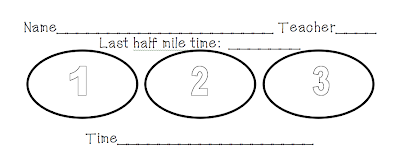I recently completed my third sprint triathlon, the
Sky Tri. The event raised money for the Skyline swimming program, and took place at
Skyline High School Sunday, April 21.
I LOVE doing triathlons -- I don't come close to winning my age group, let alone the whole race -- but I really enjoy the challenge. My sister-in-law also did the race - her first triathlon!! It was an amazing experience, and I have talked with some classes about the experience. I trained for about 8 weeks, with a good fitness base before starting swim, bike, and run training for the race.
Check out these links for ways to find triathlons or other events. There are kids' triathlons, too, with age-adjusted distances for each event.
Tri Kids Tri: Right here in Ann Arbor!!
TriFind: Look for Triathlons by state, distance, beginner, women's only, and more.
Kids TriFind: A section of TriFind for kids' triathlons!!
Chelsea Kids Triathlon! Check this out!
TriNewbies Training Programs: I used this training program (almost exactly) for my first triathlon in 2004, and then had to make many more adjustments to it for my summer 2012 race. For the Sky Tri, I did my own training (roughly: one "brick" workout per week, one day off, and the rest of the days spread between running, biking, and swimming).
Below are some pictures from the Sky Tri! It was a great event, and was managed by
Epic Races. Epic is a former Haisley parent's business!! (
Tri Kids Tri is also an Epic Races' event!) It's a small world, indeed. The race was incredibly well organized and I would highly recommend any of their events!
 |
| My kids decorating my shoes....duck tape to help block the chilly wind!! |
 |
| That's me with the green/black helmet - putting my bike back after swimming and biking. Ready to run! |
 |
| Finish!!!!! Right into my oldest daughter's arms! |
.jpg) |
| Best cheering squad ever - my niece, nephew, and my kids! |
.jpg) |
| We did it! |





.jpg)
.jpg)





